IT’S NOT THE endless daylight that prevents sleep, but the stillness. There is no breeze, no rustling leaves, no buzzing insects or hooting owls. Instead, the emptiness amplifies everything. A small avalanche of rock and snowmelt cascades from nearby cliffs into the sea—not a danger, but loud enough to make you jump. Glaciers groan as they settle. Humpbacks spout in the channel all night long.
My sisters and I are curled in bivvy sacks on a frozen beach on the Antarctic Peninsula, surrounded by some 30 other tourists and a couple fat Weddell seals.
Besides us and the guides, few of our companions have ever camped before. It’s an odd introduction, in part because leave-no-trace practices don’t cut it in Antarctica. In the morning all footprints must be scuffed out with our boots. Neither food nor drink except water is allowed ashore, along with any gear that hasn’t undergone biosecurity checks. The latrine lecture is similarly strict and involves a good deal of giggling from the uninitiated.
Everyone follows the rules, except the massive cruise ship that lumbers into view and kills its engines across from our campsite. Eventually it groans to life again and disappears behind an island. An elegant three-mast barque in a nearby cove weighs anchor and follows suit. They haven’t left; they’re just hiding at our group’s request.
“There are 20 ships along the Peninsula right now,” a guide confided when I’d asked about fellow tourists. “You feel alone because they make you feel alone.”

All this babysitting and sleight of hand is the catch-22 of Antarctica, a continent that is at once a fragile ecosystem and a ruthless force of nature. Without scrutinizing tourists and their negative impacts (both of which are on the rise), humans will inevitably ruin what makes this place extraordinary.
Yet micromanaging wilderness defeats its purpose. There are still opportunities for true exploration in Antarctica today, but they’re highly supervised and subject to restrictions. This is a far cry from the freedom enjoyed by the Antarctic explorers of even a century ago, whose feats of endurance in these frozen badlands gave rise to some of the world’s greatest survival stories. Today, with the inherent risk of polar exploration stripped away, we’re also robbed of its full rewards.
The Seventh Continent
The prospect of being trapped in a floating hotel with a literal boatload of people is not my family’s idea of vacation. (Philosopher Jean-Paul Sartre wasn’t talking about cruises when he wrote that “hell is other people,” but he might as well have been.) You can fly to Antarctica, but the traditional way to experience it is by boat. So we booked the smallest ship we could manage and sailed south from Argentina with some 90 other passengers. It’s a 330-foot 1A ice-class ship that’s nearly 50 years old and, like most Antarctic cruises, marketed as an “expedition” vessel. During a mandatory safety briefing on our first day at sea, a middle-aged woman raised her hand.
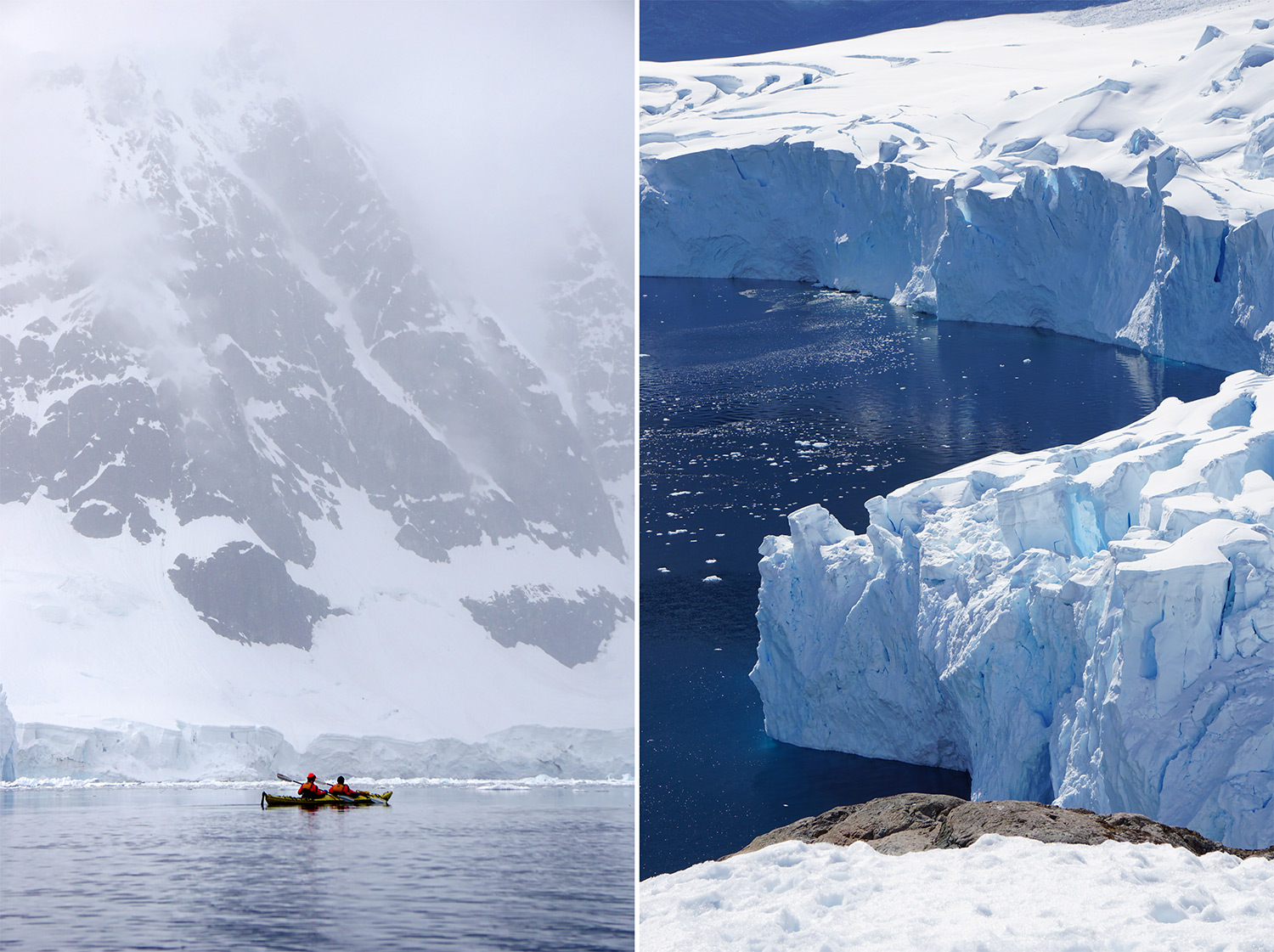
“If someone falls overboard and they’re panicking, do you knock them out first before you pull them back on board?” Our expedition leader just stared, momentarily speechless. “Because,” she added, “I don’t want to be knocked out.”
Later, our guides share other gems. A German told us about one tourist who, upon clambering out of a Zodiac onto the beach, wanted to know their altitude.
“So how high are we right now?” he had wondered, the ocean lapping at his feet.
The winner, everyone agreed, was the man who waved skyward and asked, “Is this the same moon we have in Texas?”
ANTARCTICA IS BIGGER than Europe and shaped like a hurricane, with the lone arm of the Antarctic Peninsula and its islands stretching north toward the tip of South America. It takes an average of two days to sail between the continents. Ships must navigate the notorious Drake Passage, a turbulent convergence of oceans where the waves, whipped into frenzy by furious winds, can reach 40 feet.
In the winter, the Southern Ocean freezes in a halo around the continent. The ice retreats come summer, allowing ships to maneuver close to shore—usually along the Antarctic Peninsula—and disgorge tourists. More than a few have arrived eager to see polar bears, only to discover they don’t live in the Southern Hemisphere.
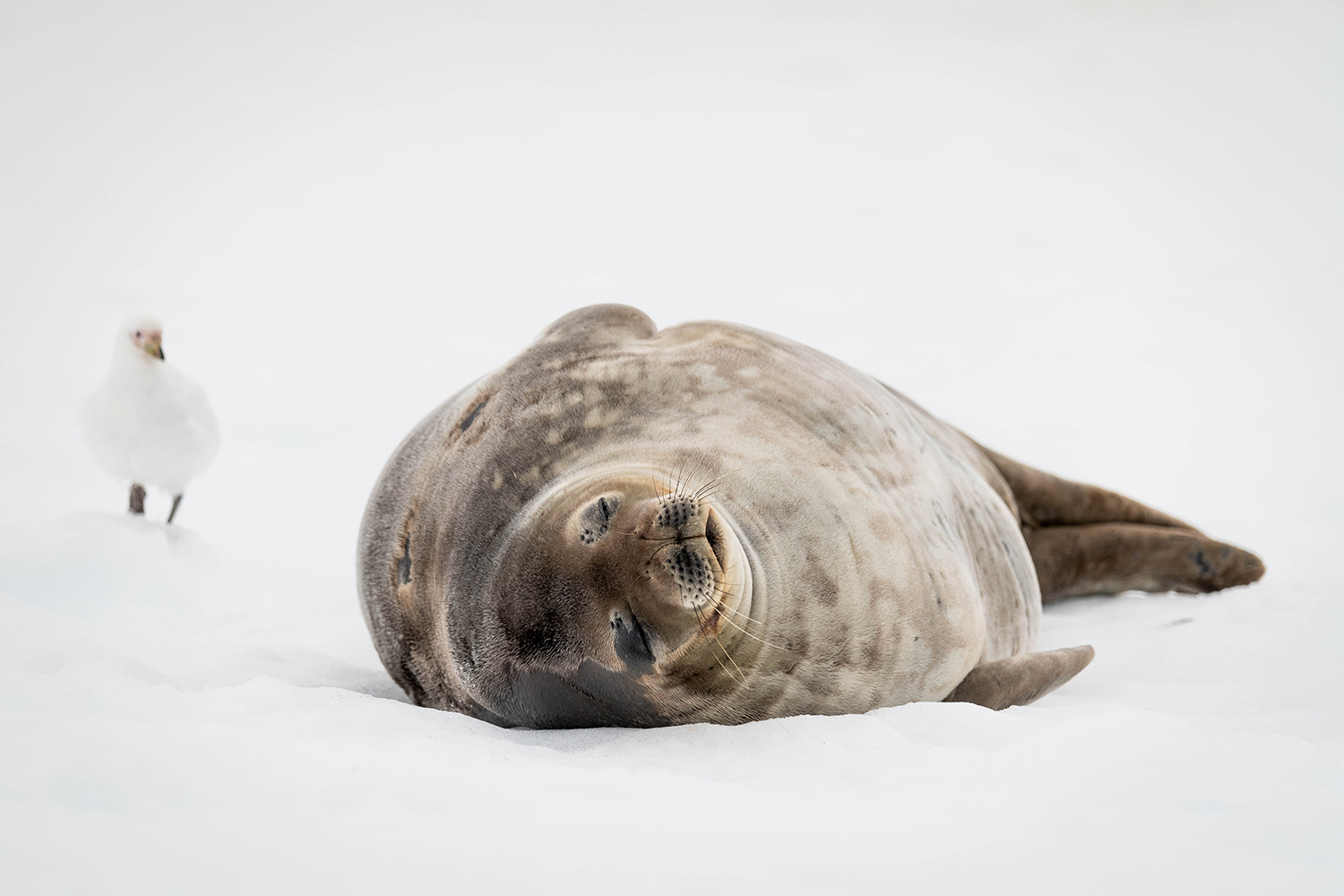
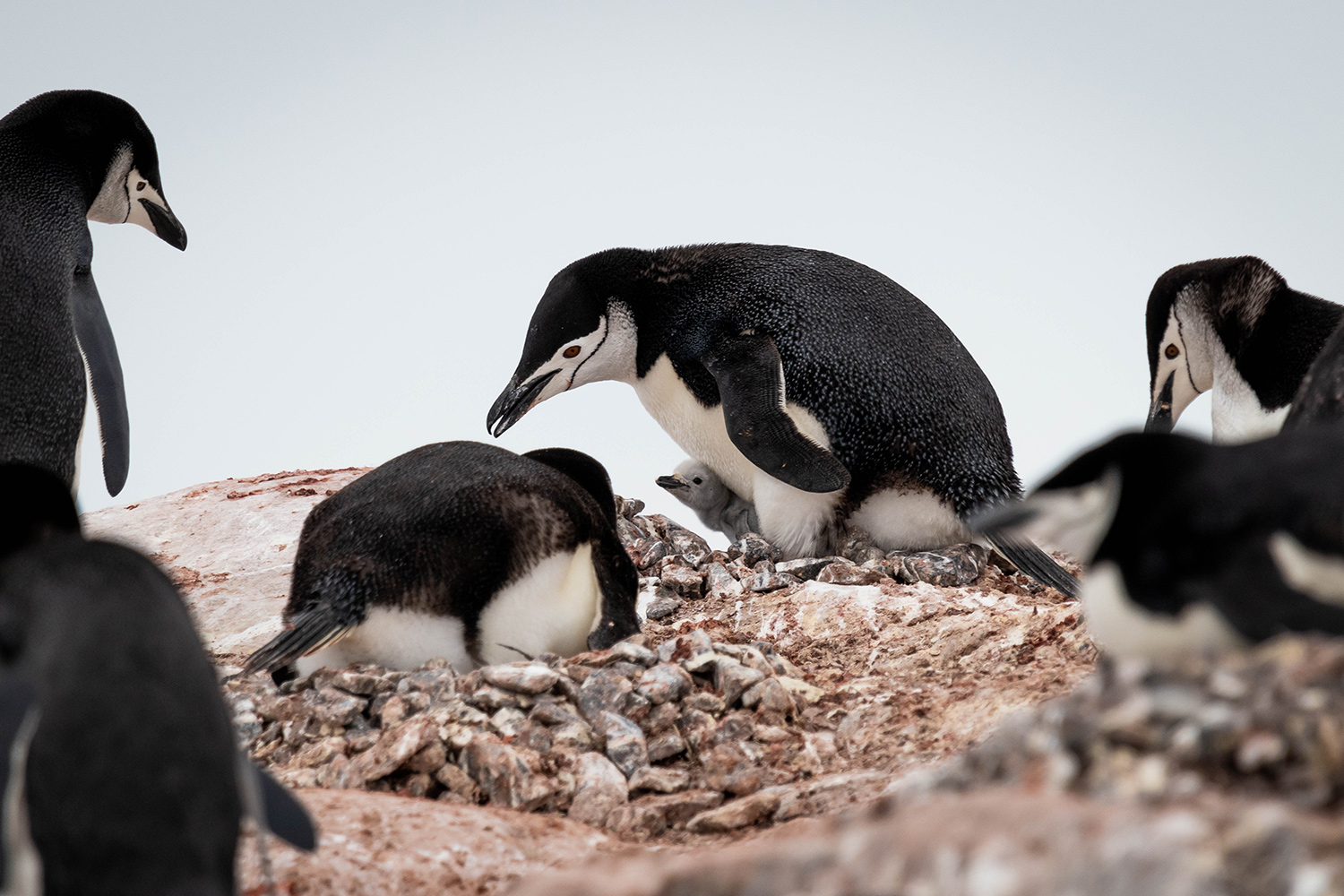
Instead, the rocky shores are teeming with seabirds like petrels and albatrosses, the latter of which can spend years at sea without returning to land. Good-natured Weddell seals and humpbacks are most common along the coast, though a dozen other seal and whale species can be spotted, too. But the main attraction are the six subspecies of penguins native to the continent. You can identify penguin colonies long before you hear or smell them by the muddy game trails through the snow.
There are no land-based predators in Antarctica, and there is no wildlife or vegetation in interior Antarctica—only snow, ice, crevasses, and rugged mountain ranges. The continent itself is covered in the largest piece of ice on Earth and contains more than half of the planet’s freshwater. The ice is so heavy that it’s actually causing the land beneath it to sink into the sea.
No single country governs Antarctica. Instead, the Antarctic Treaty of 1959 laid the foundation for global cooperation around scientific research and, later, preservation. Hunting and fishing are strictly forbidden in a place that’s designated as “a natural reserve, devoted to peace and science.”
During the 2022 to 2023 tourism season, an estimated 106,000 passengers navigated the Drake to cruise along the continent. Nearly 64,000 of those went ashore (ships carrying more than 500 passengers are not allowed to make landings). Although this number represents just 2 percent of Yellowstone’s 2021 visitations, it’s a staggering 1,225 percent increase from the early 1990s, when 8,000 tourists visited Antarctica each year. With them come invasive species, vandalism to historical artifacts, and disruption to wildlife.
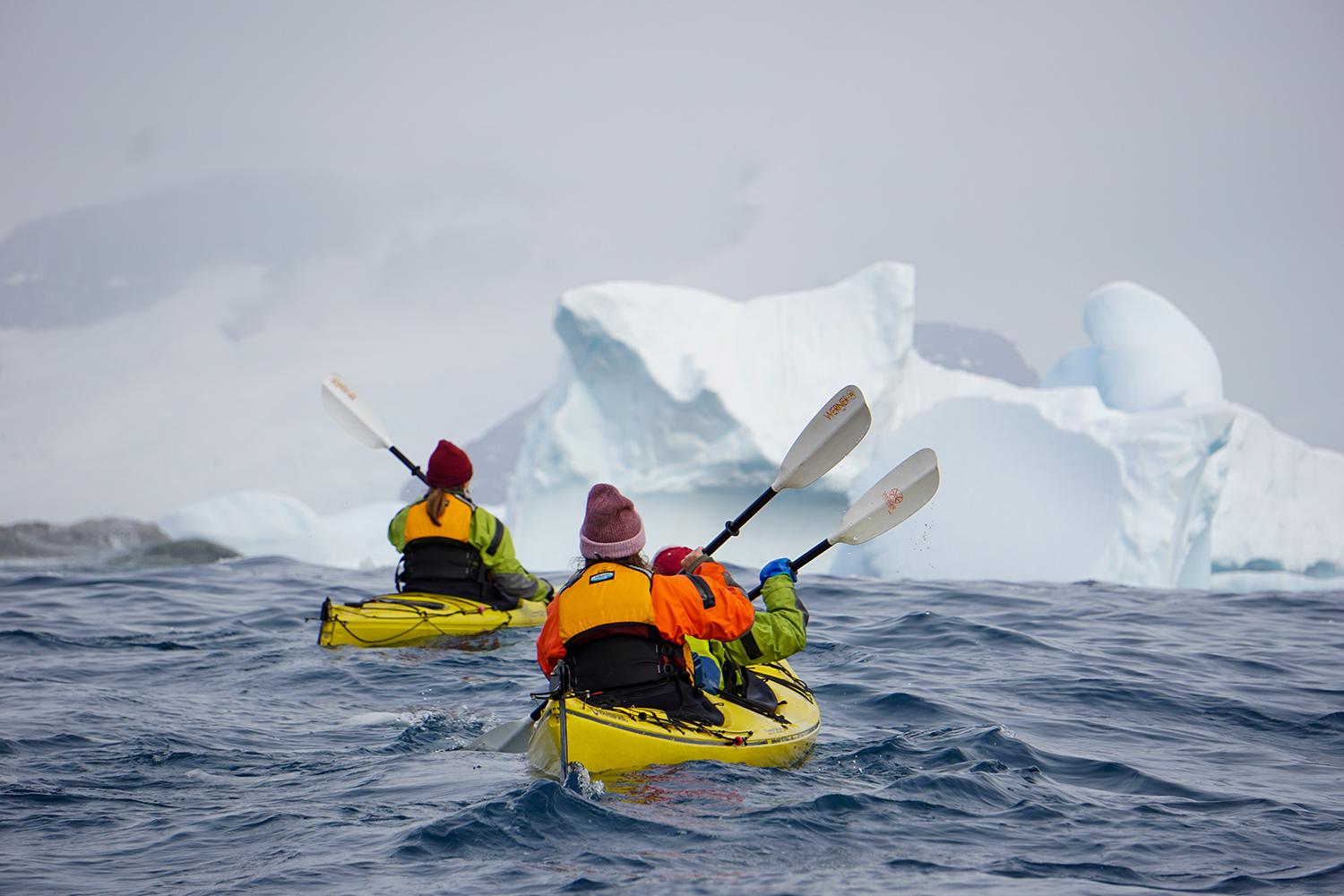
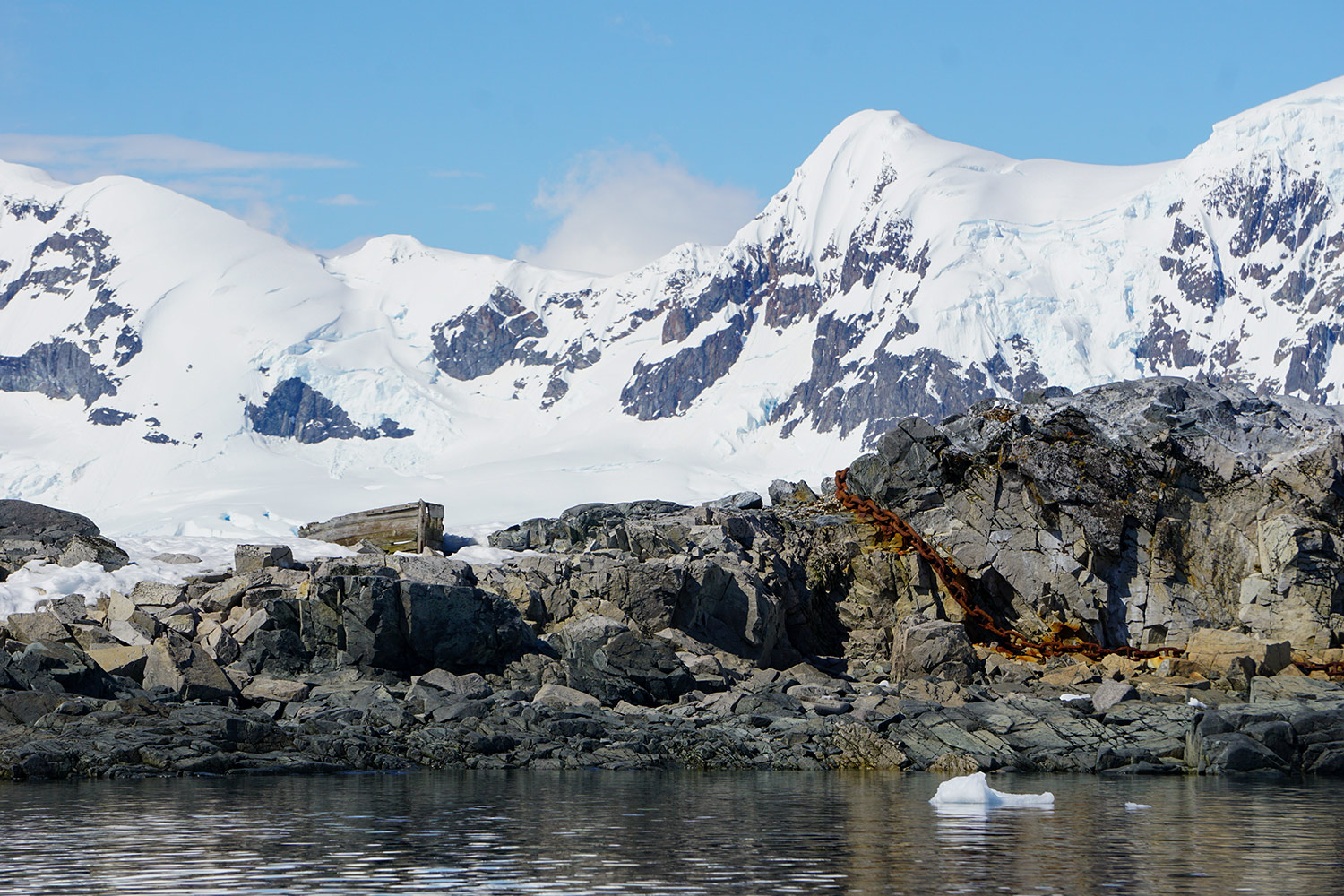
Anja Blacha Skis to the South Pole, 2020
Before the daily Zodiac cruises, our guides scout. Every morning and afternoon they scatter in all directions before collecting tourists and trolling past the critters they glassed up earlier, as if stumbling upon them for the first time.
The discretion is deliberate. They don’t tell us we’re headed to see a rare penguin in case it vanishes before we get a good look. They use code when radioing each other for the same reason. It’s a simple system—L.S. for leopard seal, E.P. for emperor penguin—but many people don’t pay enough attention to crack it.
“I’ve got an H.B. at 10 o’clock,” our guide radios after a humpback surfaces off our bow. She’s a friendly Brit with one Antarctic season under her belt, and she’s a touch nervous. I ask how she likes the work.
“Some guides carry a plastic cup so they can scoop krill out of the water and show them to guests,” she says at one point, hesitating before adding, “I’m not sure how I feel about that.”
It’s clear that the idea of displacing a handful of krill, even for a moment, troubles her. Then she twists the throttle and the motor rumbles to life.
“Anyone have an iPhone?” she asks, brightening. “Want to take a time-lapse of an iceberg?”
BEFORE SHE SKIED to the South Pole, Anja Blacha was just another tourist.
In 2013 the German entrepreneur and her sister traveled to Peru, where they joined a “standard tourist trek” to Machu Picchu. That multiday hike was her first time in a sleeping bag or tent, and she had never spent so much time outdoors.
Ten years later Blacha can’t begrudge tourists their chaperoned fun. Without it, she wouldn’t have gone on to become the youngest German woman to summit the tallest peak on every continent. That includes Mt. Everest, of course, but also Vinson Massif, the 16,050-foot peak at the base of the Antarctic Peninsula. In 2020 Blacha completed an 858 mile ski trek to the South Pole to achieve what was, at the time, the longest solo, unsupported polar expedition by any woman in history. (Her record has since been broken by Preet Chandi.)
Although Blacha, now 32, has journeyed to the Arctic (“there’s a risk of polar bears there so I had to learn to shoot”), she says Antarctica is unique. “The sheer expanse of the continent is mind-blowing. I remember being in high camp at Vinson and just looking out around me and it looked like I was above the clouds. But everything was land mass and snow and ice. It’s so, so beautiful.”
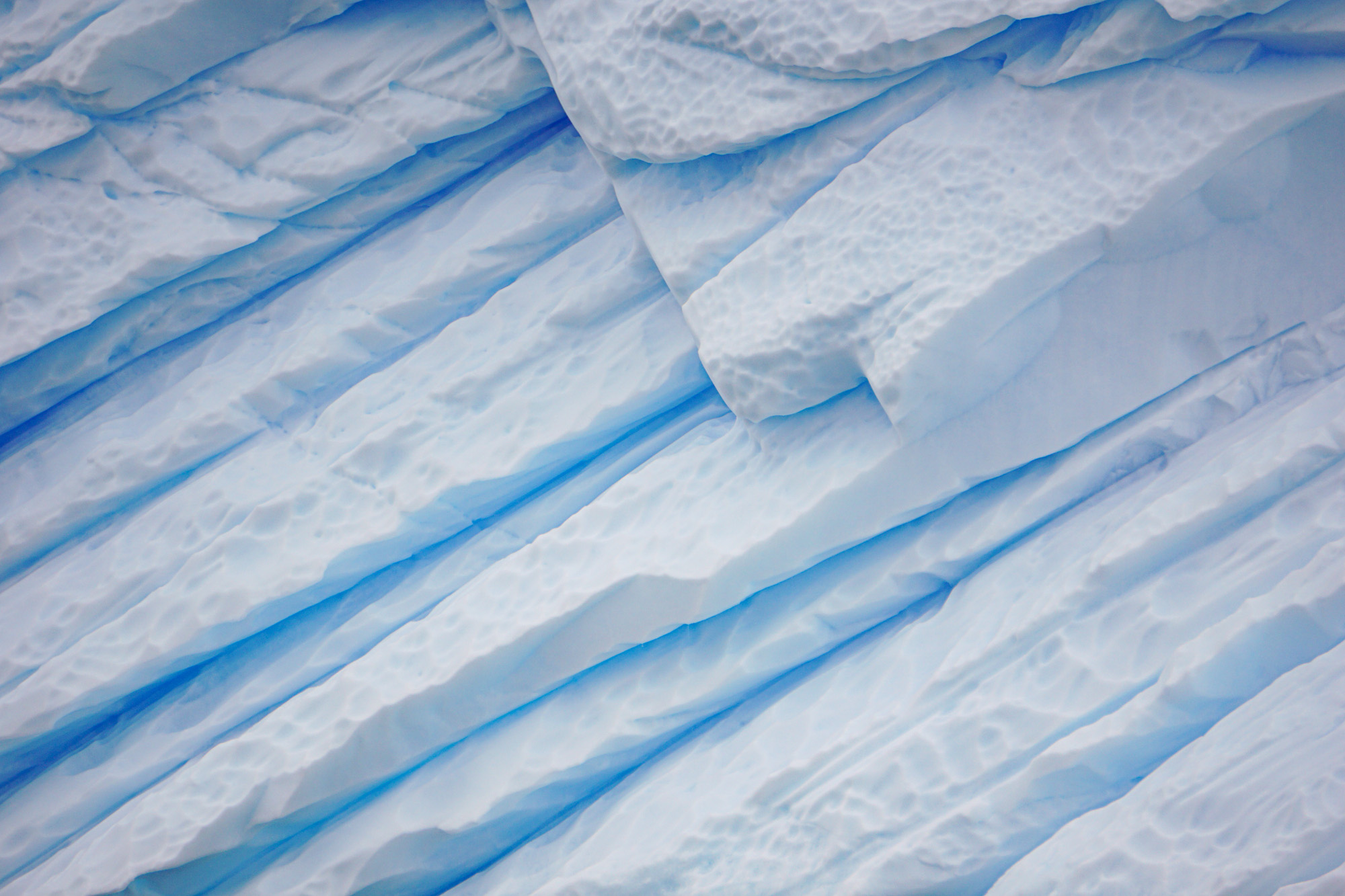
Because of that vastness, Blacha sometimes lost a feel for judging distance on her ski trek. Snowcapped mountain ranges look like they could be 10 miles away or 100. Without referencing her GPS, it was disorienting. After just four days of skiing, conditions deteriorated into a brutal storm with gusts building to over 60 mph.
“It was just miserable and painful. My tent was taken up at night and I could barely walk up against the wind. I was crawling on my knees when I was trying to get to my sled,” Blacha says. “The fact that the storm hit me at the beginning was good because it really made me conscious of how important it is to use the moments when conditions are good.”
Moments of discovery—a wind-carved valley of blue ice, the thunder of untrodden snow settling beneath her skis—punctuated the exhausting tedium of long-distance sledging. If Blacha’s most dramatic challenge was the storm, the most insidious was simply staying her course.
“It’s the small moments,” Blacha says. “The transition times are the hardest. Like when you have to force yourself to get up and pack down your tent.… Those days where there’s no big hurdle, there’s no fighting against a big storm, just stretches that are not significant enough to give you that hero story, that boost of self-confidence. But they are enough to wear you out and slow you down significantly. You have this grinding obstacle, constantly.”
To cope, Blacha stuck to a schedule dictated by strict mileage and, to a degree, her provisions. A harness around her waist allowed her to drag camp, food, and fuel in a sled that initially weighed some 220 pounds.
“I had to remind myself that I wanted to do this because it would be hard. If it was easy, I wouldn’t have wanted to do it, so I shouldn’t complain and give up because it actually was hard.”
During her two-month expedition, Blacha was required to make a daily phone call to report her GPS location. It’s not enough to simply drop GPS waypoints. Regulators wanted to hear her voice so they could monitor her condition. This protocol was tightened after British explorer Henry Worsley died in 2016. (Thirty miles short of becoming the first person to cross Antarctica on foot, unassisted and unsupported, he called for help, writing: “My journey is at an end. I have run out of time, physical endurance and a simple sheer inability [sic] to slide one ski in front of the other to travel the distance required to reach my goal.”)
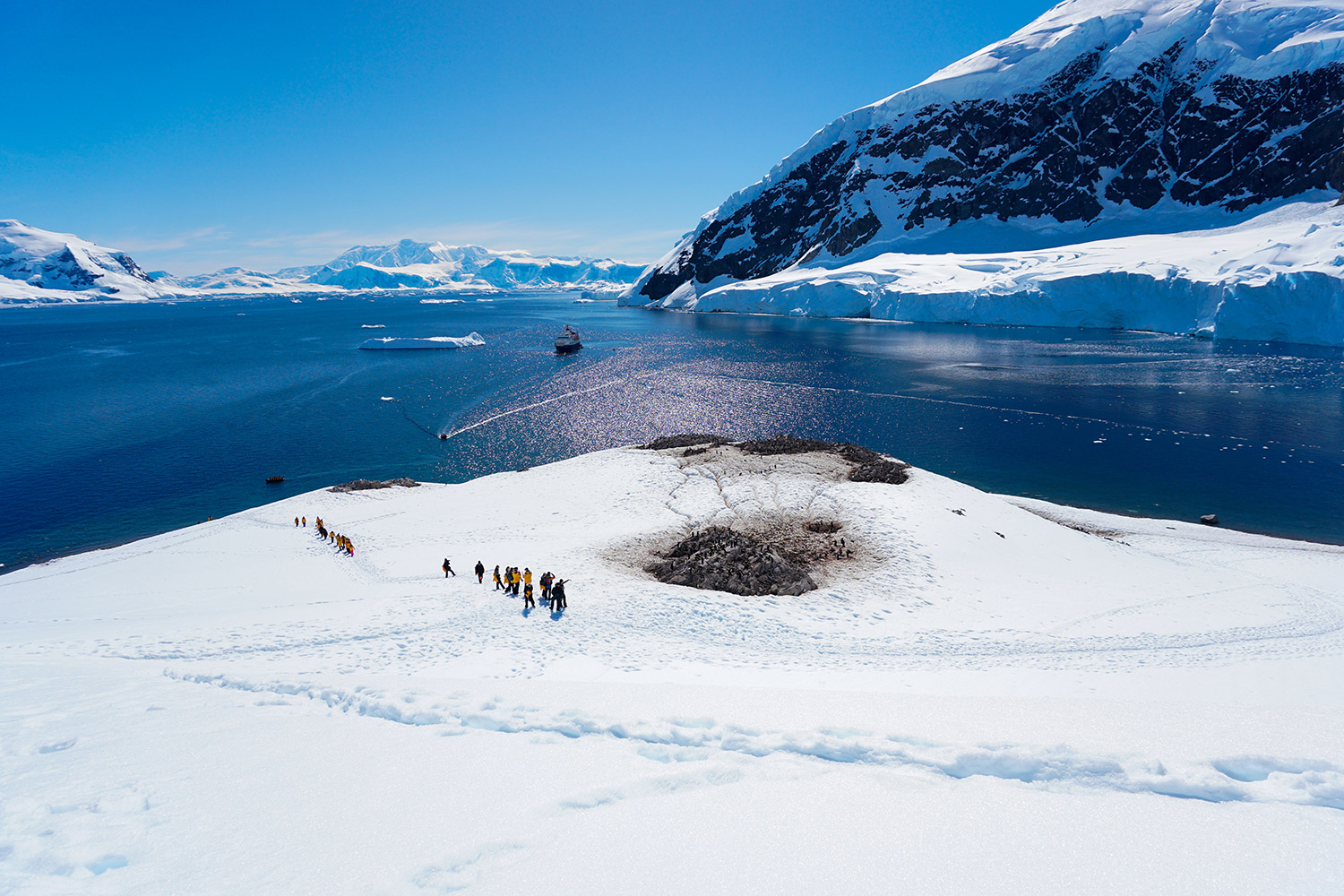
Now there’s an elaborate personnel rotation to ensure a single operator doesn’t become acclimated to “a small deterioration in your voice day after day,” says Blacha. “This takes away from the feeling of being out there on your own and doing something self-sufficient. You feel very much remote monitored, in a way. I think that’s the one thing I don’t like. I feel like it’s micromanagement. It should be my responsibility as an expeditioner to determine what safety margins I’m willing to take.”
Despite the daily intrusion, she says the benefits of strict governance “of Antarctica—in terms of keeping it pristine and prioritizing scientific research and nature protection—outweigh the downsides.”
Blacha had chosen her route specifically because it had barely been traveled. After departing the coast, she didn’t see signs of life until reaching the final miles of her nearly 58-day trip. A century ago she would have reached what was arguably the loneliest part of the planet. In 2020, her journey ended in something like civilization.
“The area around the South Pole is [one of] the busiest, so that’s where you immediately start seeing human signs,” Blacha says, noting the U.S. research station there. About 30 countries operate some 80 bases in Antarctica. “I had to navigate around the Clean Air Sector to not pollute the air with my breath and my sweat and my body. And then the last 30 to 35 kilometers I would see ski tracks—and actually somebody’s trail mix—on the way. Which was not quite what it should be.”
Shackleton’s Endurance Expedition, 1914–1916
The shock of the saltwater is blinding, and I involuntarily gulp a mouthful as I push to the surface. I try to swim back to the Zodiac, but the guide just drags me there with a rope tethered to the harness around my waist.
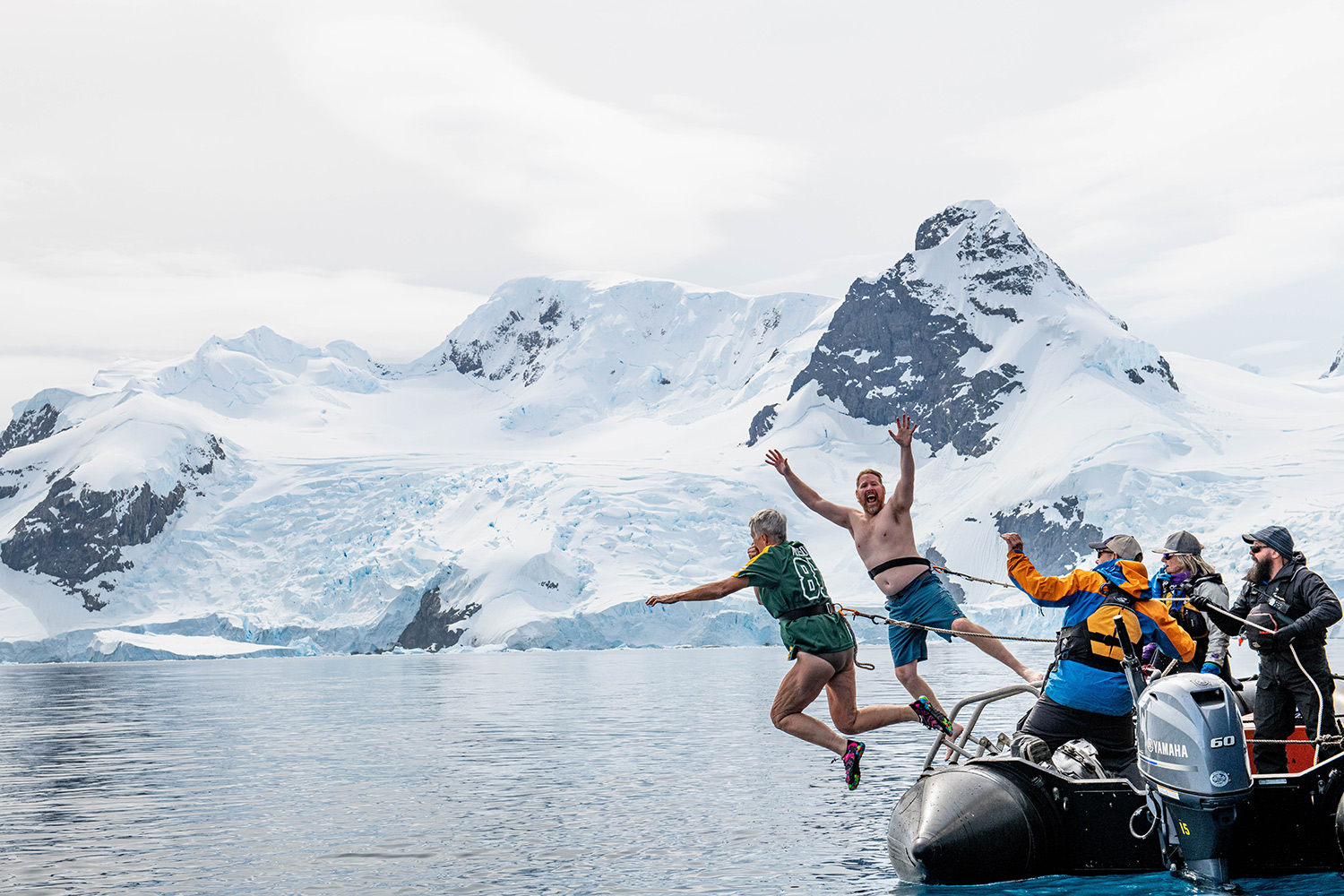
It’s New Year’s Day and nearly every passenger is lined up for a polar plunge in the Southern Ocean. Shivering, I accept a warming vodka shot from a Swede in a party hat and watch more people fling themselves into the sea. Most likely the tethers are to prevent weak swimmers from drowning, or to retrieve the occasional tourist who goes into cardiac arrest once submerged in 30-degree water.
Maybe, I tell myself hopefully, it’s for when the leopard seals attack.
SIR ERNEST SHACKLETON was one of history’s greatest leaders. He was also something of a failure.
The British explorer’s fourth expedition to Antarctica collapsed at its outset. Ahead of his voyage to circumnavigate the continent, he suffered a fatal heart attack aboard his ship. Shackleton’s death in 1922 ended what historians call the Heroic Age of Antarctic Exploration and ushered in the Mechanical Age.
A few years before, on his third expedition to the continent, Shackleton intended to cross Antarctica. Instead his ship, Endurance, was imprisoned in pack ice after just one month. Shackleton, his crew of 27 men, one stowaway, and some 70 sled dogs drifted across the frozen Weddell Sea and through the Antarctic winter for 11 months. In the fall of 1912, the ice crushed and eventually sank the ship. For five months the men sledged across the ice floes, dragging lifeboats with them and subsisting on rations. During warmer months, they shot seals and bludgeoned penguins for meat.
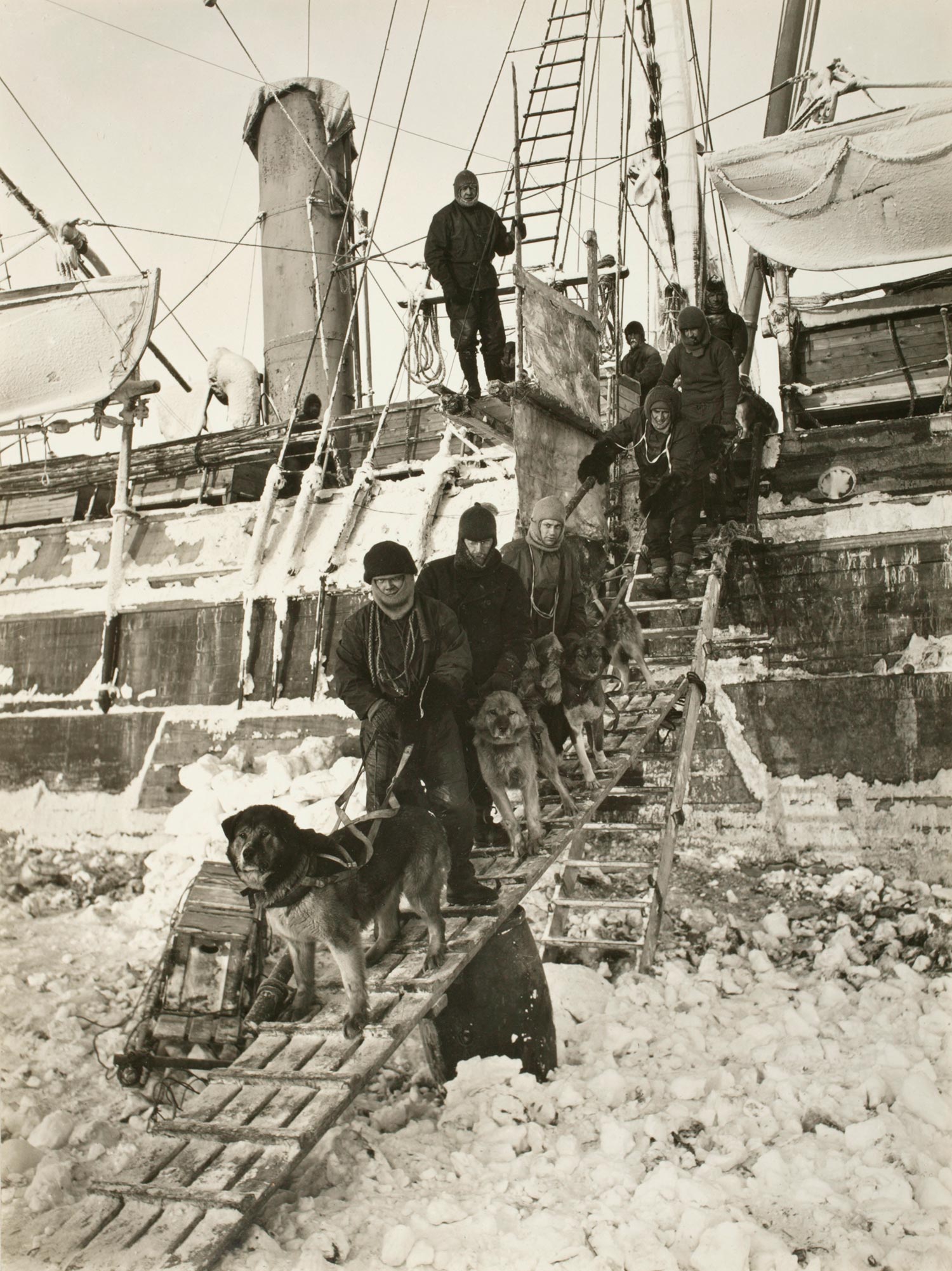
“Returning from a hunting trip, [one man] traveling on skis across the rotting surface of the ice had just about reached camp when an evil, knoblike head burst out of the water just in front of him,” wrote Alfred Lansing in Endurance, arguably the best survival book ever written. “He turned and fled, pushing as hard as he could with his ski poles and shouting for Wild to bring his rifle. The animal—a sea leopard—sprang out of the water and came after him, bounding across the ice with the peculiar rocking horse gait of a seal on land. The beast looked like a small dinosaur, with a long serpentine neck … [and] an enormous array of sawlike teeth.”
The leopard seal dove and tracked the man’s shadow from beneath the thin ice, then burst through again to cut him off, corralling the man. Shackleton’s second in command, Frank Wild, arrived just in time. “Wild dropped to one knee and fired again and again at the onrushing beast. It was less than 30 feet away when it finally dropped. Two dog teams were required to bring the carcass into camp. It measured 12 feet long, and they estimated its weight at about 1,000 pounds.”
In his diary, skipper Frank Worsley described the leopard seal’s effectiveness as a predator. (His descendant is Henry Worsley, the Antarctic explorer who died in 2016.)
“A man on foot in soft, deep snow and unarmed would not have a chance against such an animal as they almost bound along with a rearing, undulating motion at least five miles an hour. They attack without provocation, looking on man as a penguin or seal.”
The crew leveraged this observation, and tried to decoy the next leopard seal.
“…When a sea leopard’s head appeared at the edge of the floe [Thomas] McLeod, who was a small but stocky man, went over and stood flapping his arms to imitate a penguin,” wrote Lansing. “…He sprang out of the water at McLeod, who turned and dashed for safety. The sea leopard humped forward once or twice, then stopped, apparently to take stock of the other strange creatures on the floe. The delay was fatal. Wild had reached into his tent for his rifle. He took deliberate aim and fired, and another thousand pounds of meat was added to the larder.”
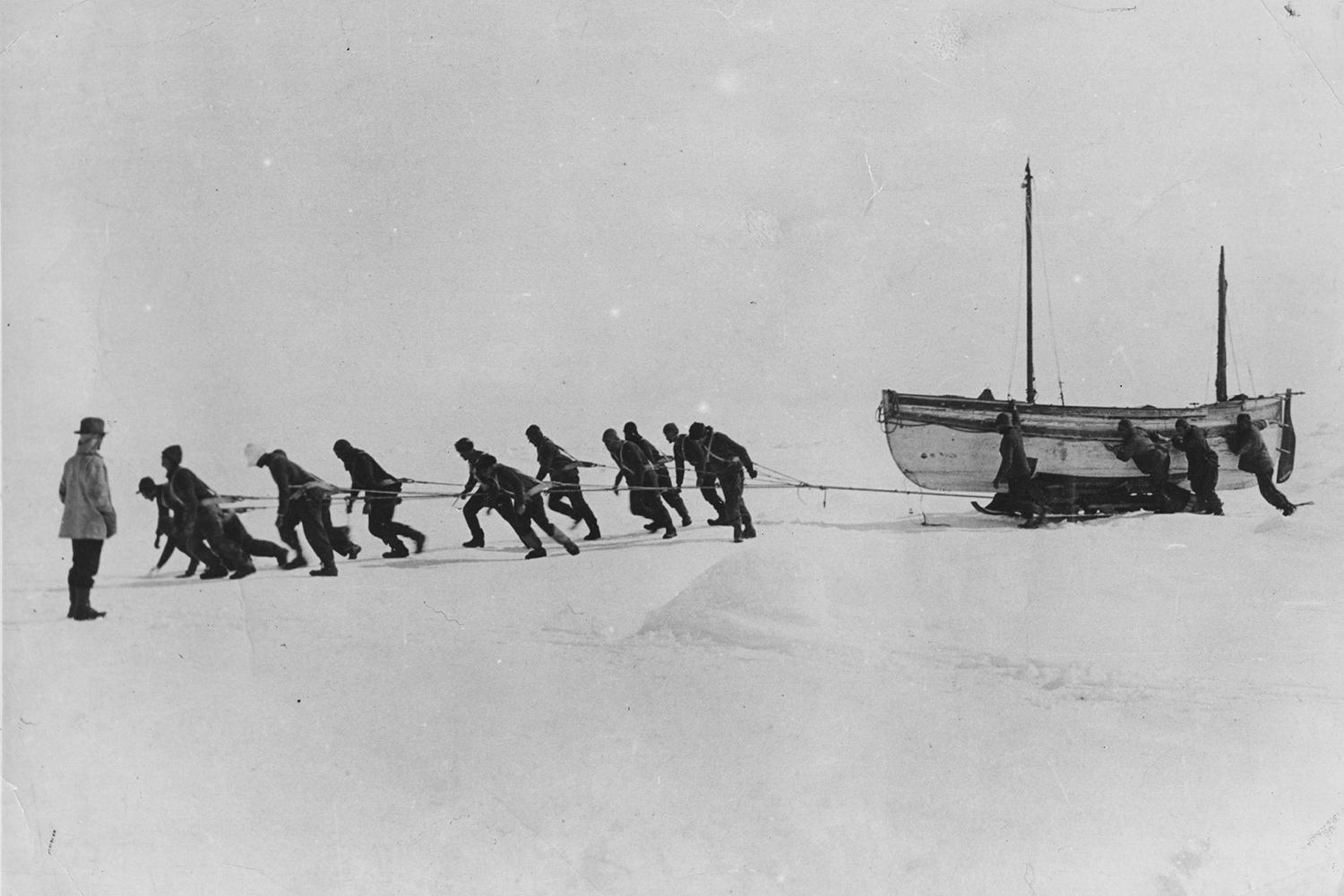
Once Shackleton’s crew made it to open water, the men managed to sail three lifeboats to an uninhabited island, where they survived on penguins, seals, and their sled dogs. From there, Shackleton took five men and the sturdiest lifeboat and sailed 800 miles across the stormy Drake Passage to South Georgia Island. To reach the whaling station, Shackleton navigated crevasses and glaciers on a journey that wasn’t replicated until 40 years later by a team of expert climbers with appropriate gear. By the time Shackleton reached help and was able to rescue his marooned crew, two years had passed since the Endurance set sail. Not a single man died.
The second time Shackleton journeyed to Antarctica, he and his men sledged to within 97 miles to the South Pole before being forced to turn back. At the time it was the farthest south anyone had ever traveled.
Shackleton’s first expedition to Antarctica was under the command of Robert Falcon Scott. Scott would later lose the race for the South Pole against Norwegian Roald Amundsen, reaching it weeks after Amundsen and dying of starvation and exposure on his return journey.
“For a joint scientific and geographical piece of organization, give me Scott,” one of Scott’s men, Apsley Cherry-Garrard, wrote in The Worst Journey in the World. “…For a dash to the Pole and nothing else, Amundsen; and if I am in the devil of a hole and want to get out of it, give me Shackleton every time.”
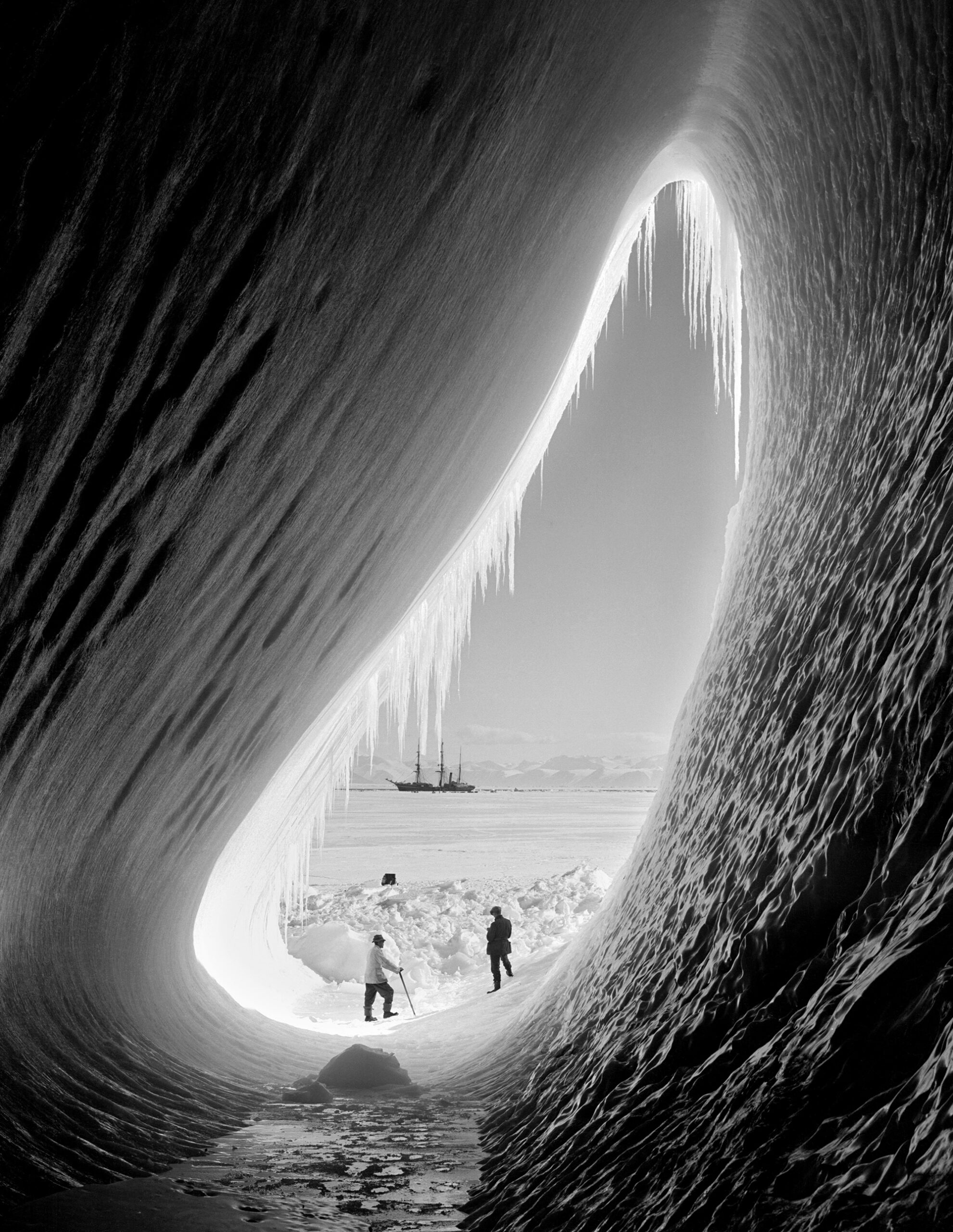
Roald Amundsen’s Belgica Expedition, 1897–1899
If I don’t give the Southern Ocean my full attention, I might actually flip. My kayak lurches in the rollers as I juggle my paddle and gear for a few tricky minutes, stowing cameras in a dry bag then reattaching the spray skirt. We’re navigating an iceberg field and the surf is plunging and slapping against the bergs, revealing their eroded undersides.
I fall behind as I drift, and two middle-aged women in a tandem kayak wobble by. Despite days of paddling together, their strokes are still comically out of sync. They’re dawdling, clearly hoping we’ll return to calm water.
“Where the hell is she going?” one woman demands. She’s staring after our guide, who is vanishing and reappearing between each wave.
“Out to open ocean, apparently,” the other grumbles.
This is the first time we’ve approached anything close to real risk all week. I dig my paddle into the chop and glide past the irritable tourists, letting the swell pull me out to sea.
THE NORWEGIAN EXPLORER Roald Amundsen was often referred to as “the last of the Vikings.” Although he later became the first person to reach the South Pole, he initially ventured to Antarctica in 1897 to chart much of the Antarctic Peninsula. (Pack ice also trapped the ship on that expedition, forcing the crew of the Belgica to overwinter in 24-hour darkness and temperatures that plunged as low as -45 degrees F. There were cold-weather clothes for just four men aboard. “Mentally,” an American crewmate wrote later, “the outlook was that of a madhouse.”)
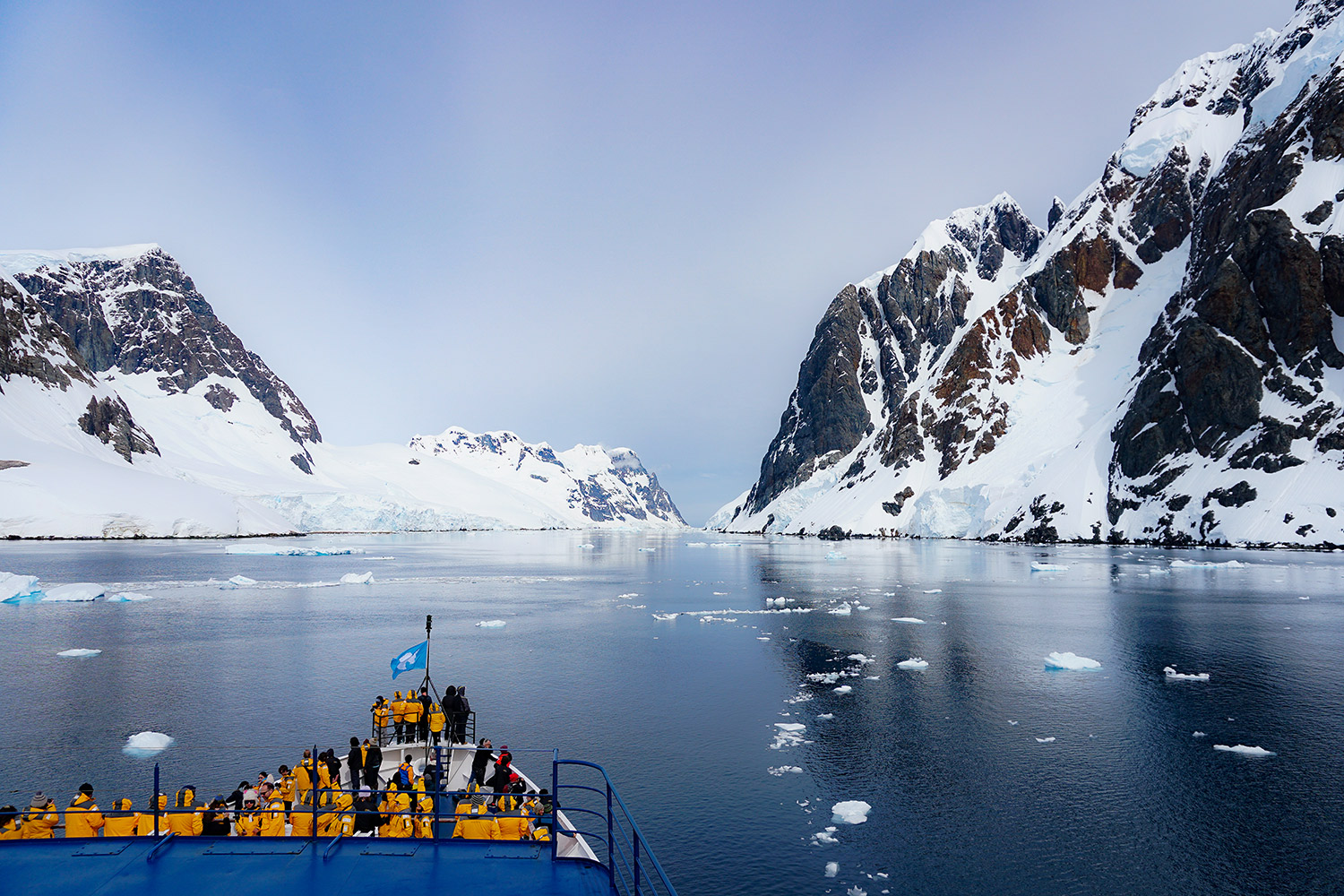
To learn to survive in the frozen South, Amundsen looked to the North. While successfully navigating the Northwest Passage—the first man to do so—Amundsen’s ship again became trapped in ice. His crew met Inuit tribes, including the Netsilik, and spent two years learning to build igloos and dress properly. Instead of constricting wool, the Netsilik gifted Amundsen sewn caribou hides, whose hollow hairs trap heat for insulation. Their loose fit also allowed better circulation.
“I find it excellent,” Amundsen wrote after testing them. “Now I can move as I want to. Am always warm, without sweating.”
He also noted certain tricks that made overland travel infinitely easier, from using and handling dogs to maneuvering sledges through variable snow conditions.
“One can’t do better in these matters than copy the [Inuit], and let the runners get a fine covering of ice,” he wrote. “Then they slide like butter.”
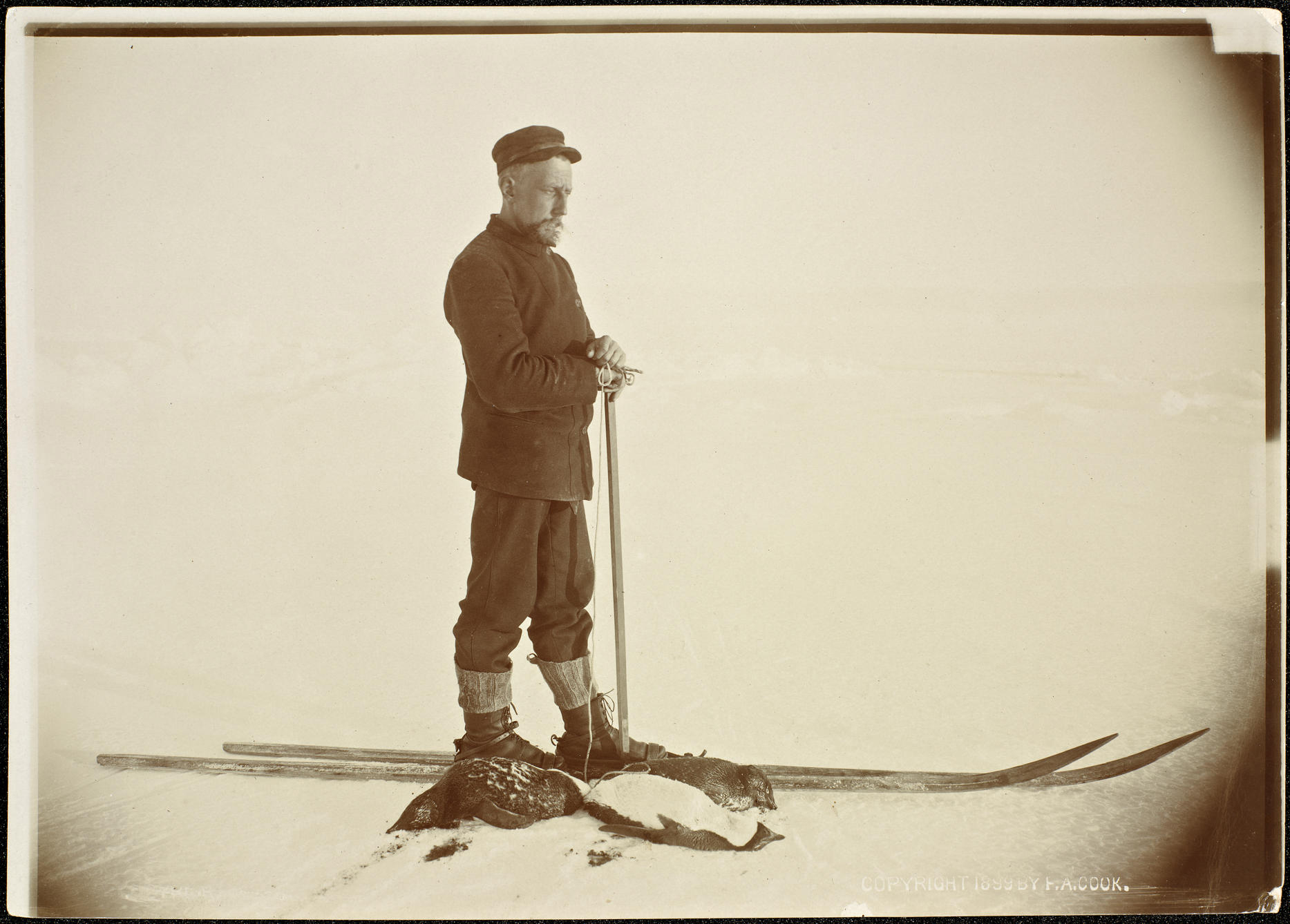
Amundsen was successful in completing his polar expeditions—the Northwest Passage and the South Pole—because of his thoroughness. He approached all things—his gear, his ship, the selection of his crew—with the rigor of any outdoorsman who wished to be prepared for whatever he might face. He also recognized the importance of calculated risk. All the great Antarctic explorers did—including those who did not achieve their goals, or lost their lives in their pursuit of them.
“Generally the risks were taken, for, on the whole, it is better to be a little over-bold than a little overcautious,” wrote Cherry-Garrard. “Always there was something inside urging you to do it just because there was a certain risk, and you hardly liked not to do it. It is so easy to be afraid of being afraid!”
Read more OL+ stories.
